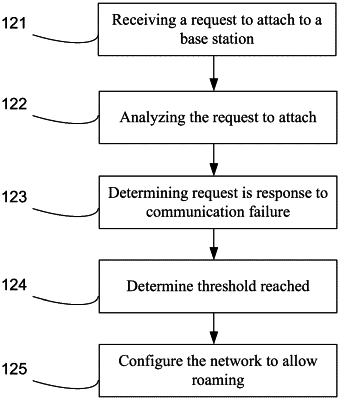| CPC H04W 8/12 (2013.01) [H04W 8/26 (2013.01); H04W 60/04 (2013.01)] | 20 Claims |

|
1. A method comprising:
receiving an indication of a request to attach to a base station of a plurality of base stations of a first service provider network;
analyzing the request to attach to the base station of the first service provider network;
based on the analyzing, determining that the request to attach to the base station of the first service provider network is indicative of a failure to attach to a second service provider network which is indicative of a first type of attach;
determining that a first threshold number has been crossed of the first type of attach over a period, resulting in a first determination;
determining that a second threshold number has not been crossed of a combination of the first type of attach and a second type of attach, resulting in a second determination, the second type of attach corresponding to failures to attach to the first service provider network; and
based on the first determination and the second determination, providing instructions to configure the first service provider network to allow roaming for one or more user equipment of the second service provider network, the allowed roaming being designated in the instructions for some, but less than all, of the plurality of base stations of the first service provider network.
|